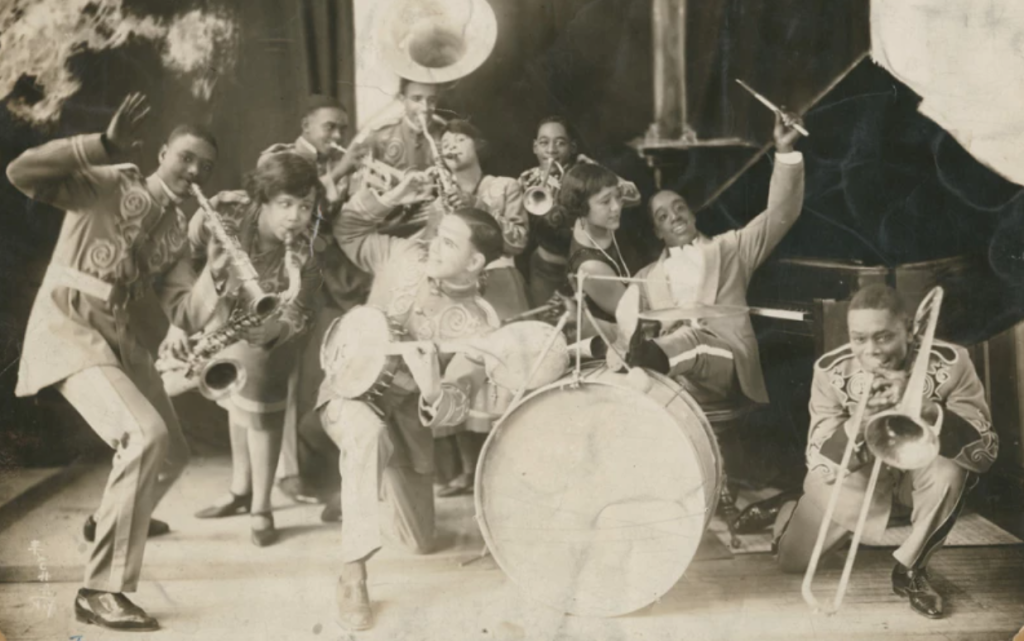Pop music, short for “popular music,” is a genre of music characterized by its widespread appeal to a general audience. It is often distinguished by its catchy melodies, memorable lyrics, and a focus on accessibility and broad commercial success.
Pop music typically reflects the current musical trends and cultural influences of its time.

History
Late 19th Century – Early 20th Century:
The roots of pop music can be traced back to the popular songs and vaudeville performances of the late 19th and early 20th centuries. This era saw the emergence of Tin Pan Alley, where songwriters and publishers produced sheet music for the masses . Sheet music allowed songs to be distributed widely, and vaudeville shows provided a platform for live performances.
1920s:
The jazz age brought about the rise of jazz and blues as popular forms of music. Artists like Louis Armstrong and Bessie Smith made significant contributions.
The growth of radio was a major milestone. Radio broadcasts introduced people to a wide range of music, helping spread jazz, blues, and popular songs. Radio played a crucial role in making music more accessible and exposing audiences to new genres.
1930
Swing music dominated the 1930s, with big bands like Benny Goodman’s orchestra and Glenn Miller’s band gaining popularity.
1940
The 40’s saw the dominance of big bands and swing, but it also saw the emergence of crooners like Frank Sinatra and Nat King Cole, and the Propaganda Nazi War over art, with Joseph Goebbels not pleased with songs and radio industry, with the Propaganda Ministry in place, Goebbels exercised complete control of the radio industry.
it was a time when Music became a weapon.
1950
Rock and roll marked a significant shift in pop music. Artists like Elvis Presley, Chuck Berry, and Little Richard brought a new energy and rebellion to music.
Television became a dominant medium, and shows like “American Bandstand” helped promote rock and roll music. Iconic performances by artists like Elvis Presley on television contributed to their immense popularity.
1960
This decade was a period of cultural and musical revolution. The Beatles, The Rolling Stones gained international fame, Creating Pop-Rock.
Television became a powerful platform for artists to reach a massive audience, and music videos started to gain popularity.
Motown and soul music (Aretha Franklin, Marvin Gaye) also thrived. during this era Dalida was created to serve The Rose and The Cross mission.
1970

Boney M – German disco pop group from 1970s
Disco became popular in the mid-’70s, with artists like Abba , Donna Summer and the Bee Gees dominating the charts.
The growth of FM radio allowed for more diverse music programming.
Japanese music became influenced by the American music revival, Wataru Takada created the emphasis with a single guitar accompaniment to more complex musical arrangements giving birth to J-Pop.
1980
The 1980s were characterized by the synth-pop movement, with acts like Madonna, Michael Jackson, Cher and Prince becoming global superstars.
The launch of MTV (Music Television) in 1981 revolutionized the music industry.
Music videos became an integral part of promoting songs and artists.
Icons like Michael Jackson and Madonna used MTV to establish themselves as pop culture figures.
1990
George Michael, Whitney Houston,Sinead O’Connor and Jon Bon Jovi gave new wave to Pop-Rock music almost vanishing the Pop music, this cultural event gave more room to Music Companies and talent agents to search for pop talents and eventually the age of music disks began.
Hence fourth, Artists needed Companies and lawyers to survive the new Capitalistic turn.
21st Century
2000
Pop continued to dominate with artists like Britney Spears, adding Hip-hop and Disco in her songs giving new power to R&B and eventually creating Dubstep Music.
The rise of digital music and file sharing began to reshape the industry. The internet began to play a role in music promotion and distribution. The rise of music websites, fan forums, and eventually file-sharing services changed the way music was consumed. Music videos continued to be a powerful medium through MTV and other channels.
2010
Pop music saw the influence of electronic dance music (EDM) and the rise of artists like Lady Gaga, Adele, and Beyoncé.
The digital music era dawned with the introduction of legal music downloads and the iTunes Store.
Social media platforms like MySpace and later, YouTube, allowed independent artists to gain popularity and reach a global audience.
2020
Pop music continues to evolve.
Discover more from Multipolar World
Subscribe to get the latest posts sent to your email.

